Borsec is a town located in northwestern Romania (Harghita county), in the mountain depression bearing the same name in Eastern Carpathians, surrounded by Bistriţa Mountains, Călimani, Giurgeu and Ceahlău Mountains, at an altitude of 900 m, 120 km away from Piatra Neamţ, 28 km from Topliţa, 130 km from Târgu Mureş, 91 km from Bicaz, 125 km from Miercurea-Ciuc and 186 km from Braşov.
Climate
The Cold alpine climate (15°C average temperature in July; - 7°C average temperature in January). Weak wind. The annual average temperature of 5°C. Moderate rainfall (700-750 mm annually).
Brief history
An old resort (known from 1804), open all year, with numerous carbonated mineral springs, or ones containing calcium or magnesium. These waters are known for their beneficial effect since the second half of the sixteenth century. The therapeutic effects of these mineral springs were recognized internationally - medal in the International Fair in Vienna (1873), silver medal and diploma of honor at exhibitions held in 1876 in Berlin and Trieste, honorary diploma of the Paris Exhibition (1878).
Borsec resort is recommended for the treatment of cardiovascular diseases (compensated mitral insufficiency and heart failure, hypertension, varicose veins), endocrine diseases (hyperthyroidism, Basedow disease, prepubertal conditions in overweight children), biliary dyskinesia, digestive diseases (chronic hypoacid gastritis ,chronic constipation, chronic nonspecific colitis), chronic acalculous cholecystitis, renal and urinary system disorders, asthenic neurosis, dermatological diseases, metabolic and nutritional diseases etc.
In Borsec there are many facilities for hot baths in tubs or pools covered with carbonated mineral water, mineral springs for internal treatment, electrotherapy and hydrotherapy facilities, installations for baths with herbs, paraffin packing, gyms. The resort provides extensive leisure opportunities (blazed mountain paths, sport fields, cinemas, skiing slopes and sledding tracks etc.).
In Borsec there are over 15 natural carbonated mineral water springs with close chemical composition, stability in time and variable flow, sources 1 and 2 being the most important both in terms of quality and flow. By their composition, mineral waters have curative effects on diseases of digestive tract (stomach, intestine, bile ducts), of kidneys, bladder and urinary tract, as well as on the peripheral circulatory system. In 1803, Viennese citizen Valentin Gunther underwent treatment at Borsec, healing of an incurable disease. Returning to Vienna he proposes a relative to trade with mineral water in Borsec, and thus to lease Borsec (a small hamlet at the time) from Lazarus and Ditrău localities from Lazarus and Ditrau municipalities, owners of the resort.
In 1804, Gunther Zimmetshausen and Eisner (a mine engineer) travels to Borsec to treat the lease and see if they can build a glass factory for bottling. The lease agreement has been concluded and signed for 28 years. Besides soda, in Borsec were found in abundance all materials needed for the manufacture of glass. Zimmetshausen was moving in Borsec in 1805, starting vast constructions of houses, forest logging, road and a glass factory building. He brought specialist workers in the manufacture of glass from Austria, Bohemia, Bavaria and Poland. Their names were preserved by descendants like Siller, Talmaier, Birman, Fokt, etc. In 1806 began industrial bottling in glass bottles manufactured in Borsec. In the first year there were bottled 3 million liters of mineral water which were transported by wagons to the four corners, reaching even to Vienna. Water trapped in the well from the springs 1 and 2 was poured into bottles, stoppered with corks and waxed by sealing. It is interesting that bottling was done only on sunny days when the atmospheric pressure was maximum, and so the CO2 content was full.
The town of Borsec is made up of two districts: Upper Borsec and Lower Borsec. The latter lies along the national highway 15 and the Upper Borsec is located on the travertine plateau and basically this neighborhood is tourist resort itself. The population recorded in the 2002 census was of 2864 stable inhabitants. The town owes its reputation to the mineral resources with rich therapeutic qualities. It is an area inhabited since the second half of the eighteenth century. Subsequently to initiating local manufacturing glass making activities (in 1804-1806 started mineral water bottling), after 1819 started the travertine exploitation and then right after 1879, lignite exploitation. In the mid-nineteenth century were built the first baths and thus they focused on infrastructure, achieving connection with Topliţa. The first spa was opened in 1918, a massive revival taking place in the interwar period.




 what's nearby
what's nearby
